Serious Phez/Quailer Goes Grousin’
What if you were a Serious grouse hunter and had the opportunity to take a serious pheasant- and quail-chaser into the grouse woods for a virgin trip. Would you be licking your chops? Issuing warnings? Secretly laughing inside?
Well, that’s what Bob St. Pierre recently did, and we got the scoop on it. Bob is the VP of marketing at Pheasants Forever and Quail Forever, a great dude and a heck of a writer – and got that way by growing up chasing grouse in the UP of Michigan. He still chases forest chickens whenever he can, and gets to do it because his “job” this time of year is to bird-hunt.
(If you contemplate such a job, someone might find you in this state:)
Anyhow, we caught up with Bob and the newbie in question, Rehan Nana, PF’s/Quail Forever’s new PR specialist, to find out how it went.
Bob
SBH: First, what’s a pheasant guy like you doing grouse hunting? Is this a side effect of growing up in the UP?!
Bob: Yes. Growing up as a “Yooper†in Michigan’s Upper Peninsula automatically does three things to a kid;
1) I subconsciously use “eh†at the end of most sentences as if I were Canadian.
2) I intuitively know the time of the year based upon the amount of Green Bay Packers coverage in the evening newscast. If it’s the top news story, then it’s hunting season. If it’s 5 minutes into the news, then it’s summer. If there’s no Packers coverage, then I’m not watching a news station originating in Wisconsin or the U.P.
3) I have an insatiable addiction to hunting “partridge,†as ruffed grouse are referred to in the U.P.
Seriously, I love grouse hunting. My love for bird hunting and bird dogs came from grouse hunting with my dad as a teenager, and I never miss Michigan’s opening weekend to grouse hunt with my family.
Does your dog need to adjust going from pheasant to grouse or vice versa?
That’s a real interesting question. First I have to admit that I’m not a professional dog trainer or hunt tester. I train my dog to hunt the way I want and don’t worry a whole lot about style. I’m a bird hunter, and my goal is to put meat on the plate with a bird dog teammate.
With 5 seasons under her belt, I believe my German Shorthaired Pointer knows what bird we’re hunting based on two things: cover and scent. She’s hunted both birds in their unique habitats often enough to know that grass equals roosters and forests equal grouse. I believe this because her scent cone – the distance she gets from the pointed bird – seems to be further in the grouse woods than in the pheasant fields.
I think a skilled pheasant dog will take at least a few hunts to develop a scent cone appropriate for grouse, just like a skilled grouse dog will struggle to pin running roosters.
Did you notice anything Rehan was doing that first-timer grousers should be aware of?
Thankfully Rehan never got lost, but first-time grouse hunters should never leave the truck without a compass or GPS, and know how to use it.
Prairie hunters can, for the most part, see the landscape all around. Grouse hunters only have to take 10 steps to be completely lost.
Rehan
SBH: First, how on earth did you luck into your new gig and how stoked are you about it?
Rehan: I couldn’t be happier to be a part of Pheasants Forever and Quail Forever. Before I joined up, I’d known about the positive momentum Pheasants Forever has created throughout the country for upland habitat and was anxious to help. I guess I hounded Bob enough to give me a chance, even traveling to volunteer at Pheasant Fest Omaha [last winter]. A year and a half later, here I am.
What did Bob tell you about grouse hunting before you went, and did it end up being true or were you just wondering why in the heck anyone would do such a thing?
Bob kept harping on making sure to put myself in the proper habitat and to keep walking. Both sage pieces of advice that served me well.
I also kept hearing mention of “The Big Woods†and didn’t quite realize how accurate that description would be. It seems like you can walk around all day and not see anything, but then come across some berries and some young aspen and have it all come together in an instant.
Like all birds, grouse seem to depend on certain basics: cover, food and water. [He means gravel, cover and food, in that order! We’ll send him a copy of our book….] If you can figure out how to piece those together properly, which I haven’t yet, you’ll hopefully bump a couple.
I was lucky enough to run into a covied family group the first 15 minutes of the first day, so after quickly shooting and missing, I was kind of hooked and the whole “Why the heck would anyone do this†never occurred.
What did you learn on your first ruffie hunt?
The highs of grouse hunting seem to be incredibly high, and the lows are incredibly low – and generally happen a second before a branch smacks you in the face. If you can ride out the lows without going on tilt, grouse are one of the most challenging, interesting, fun birds to hunt, and I look forward to heading out every opportunity I get this season.
Another important, more-tangible thing I learned is how critical it is to properly position yourself behind a dog when you have the opportunity to do so. Trammell [Bob’s dog] locked up on a woodcock and it gave me the opportunity to haul through some brush, get in position and get my first woodcock. Given how thick the cover is, any opportunity you have close the gap between you and the bird is invaluable.
Something else I learned and admire about grouse hunting is that it seems it would make you a better hunter in general because you can’t hunt the same tracts year after year.
Grouse appear to have very specific dietary and habitat needs that are constantly changing and require you to change and move with the birds. Every year you’d have to assess the habitat, and often abandon what could have been the best hunting of your life in search of new areas with better habitat.
What would you do differently next time?
I would’ve brought a GPS or at the very least a compass. Hunting farms and fields, you’re always able to see the direction you’re supposed to be going or are able to mark a waypoint in the distance. But once you step off the trail in the grouse woods without a GPS, you may as well be in Narnia.
To make matters worse, even when I knew which direction I was supposed to be going, I found myself unknowingly following the path of least resistance, which is never a straight line and quickly leads you to question where you are.
How would you characterize grouse vs. pheasants and quail (tougher, faster, easier, etc.).
With my limited experience in grouse, I think the hierarchy would go something like this: If you can hit a grouse, you can hit a pheasant; if you can hit a pheasant, you can’t necessarily hit a grouse; if you can shoot grouse consistently, you’re not a very experienced grouse hunter!
Quail and grouse are about the same in terms of difficulty, but for different reasons. Quail fly a bit faster, are smaller and bust as a covey, but as a prairie/hedgerow hunter, trying to track a grouse across a thick forest backdrop was extremely difficult and always led me to question whether or not I had a “clear shot” – a phrase that apparently doesn’t exist in grouse hunting vernacular.
In terms of toughness, grouse seem to “lack integrity.†From what I’ve seen, if you can even clip them, they ask for last rites.
Guns/Shells
No interview would be complete without some gear deets, so here they are.
Bob
I splurged on a Franchi 20ga Renaissance Classic this past winter. I have a Cyl choke in the top barrel and a Skt choke in the bottom barrel, and shoot Federal Premium ammo, #7.5 loads at 1350 fps.
I believe in “fast†shells for two reasons. One is consistency: I try to shoot the same-speed shells at pheasants, grouse, 20ga, 12ga and all conditions to give my shooting consistency. I’ve found consistency to be a huge factor in improving my shooting skills.
The second reason is confidence: I have confidence in the idea that faster is better. Whether it is or not in terms of scientific research doesn’t matter to me. Fast shells give me confidence, and I believe confidence is a major factor in shooting success.
Rehan
I’ve always used Federal Premium shells, but what surprised me was #7.5s were recommended by almost everyone. I was planning on shooting #6s, but after seeing a grouse’s flight pattern it started to make sense due to the shot pattern with #7.5s and the range you’re shooting. Speed was somewhere around 1265.
I took a 16ga LC Smith SxS choked Mod/Full. It’s the gun I feel most confident with, and I figured it would be beneficial in the woods – because with a SxS you’re looking wholly at the target and relying on fit and muscle memory for swing/aim. I’m also one of those obnoxious shooters stuck in 1934 who claim the 16ga is the perfect gauge.
I also tend to think that if you’re hunting something new, take something old – meaning above everything else, take something you feel comfortable with and are used to handling. Luckily, this theory of mine held water – one of the few of the trip! – and I was able to get my first and only grouse to date, crossing right-left out of a stretch known as “The Berry Patch.”
Category: 2011-12 reports, Federal Premium, Franchi, LC Smith, MN, Pheasants Forever, Ruffed Grouse, Woodcock

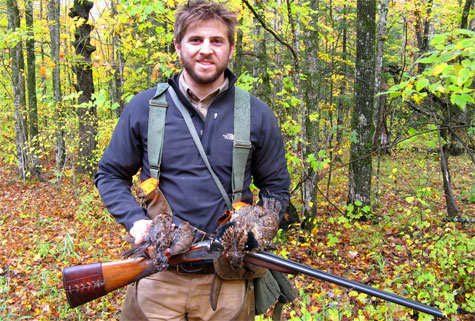

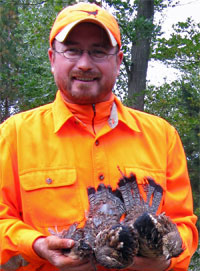




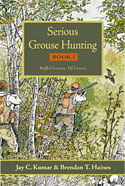

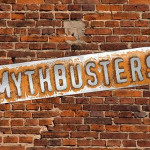
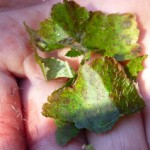
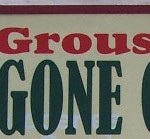
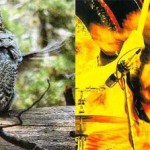
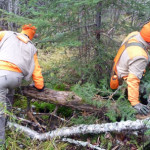
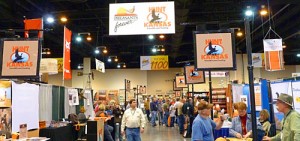
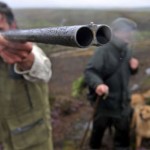
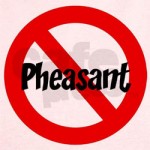
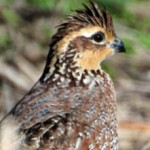
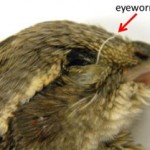

Nice. Phez hunters brought into the light. Good story. And scratching one down with a tightly chocked gun, too. Well done.